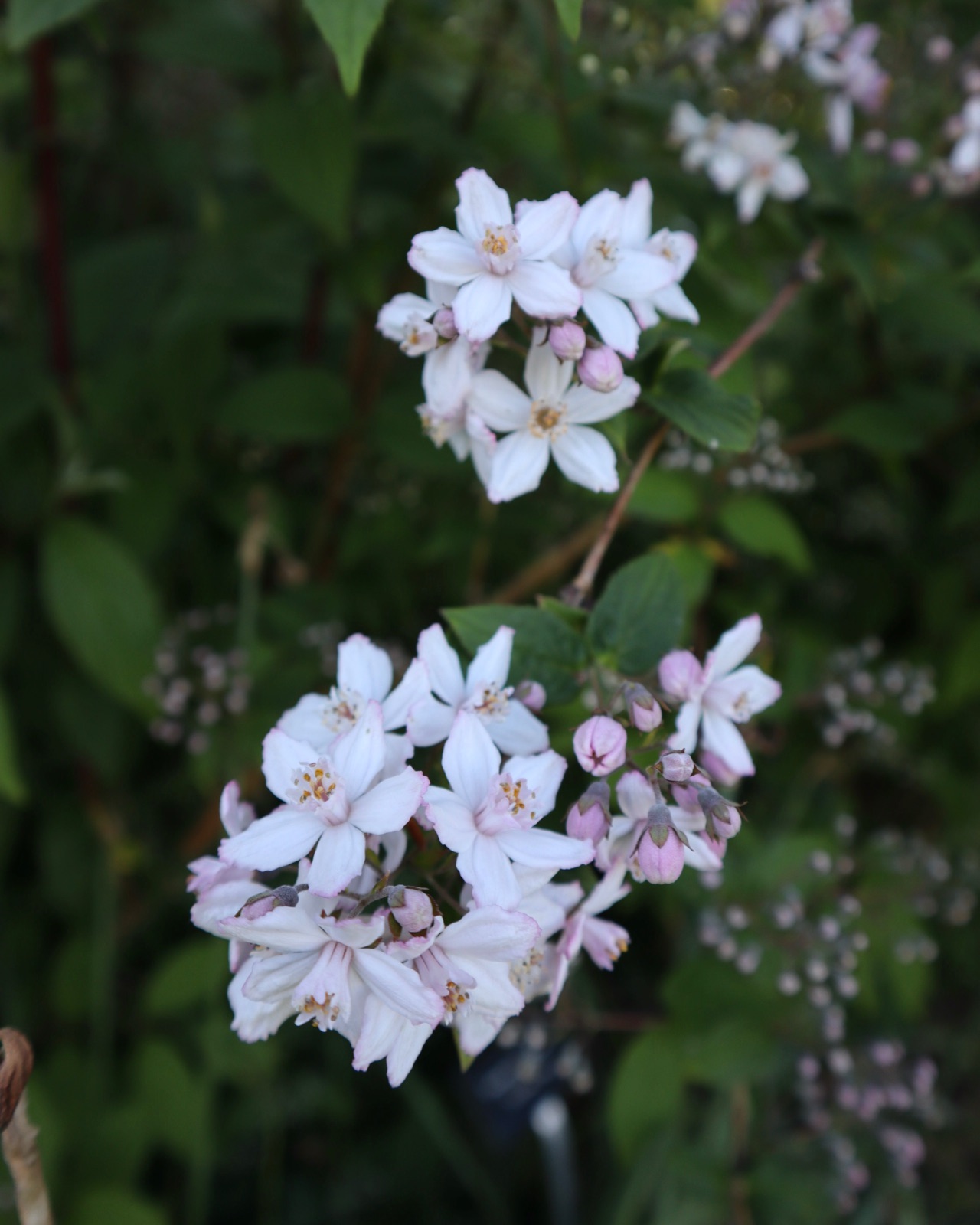Deutzia corymbosa
Credits
Article from Bean's Trees and Shrubs Hardy in the British Isles
Recommended citation
'Deutzia corymbosa' from the website Trees and Shrubs Online (treesandshrubsonline.
Genus
Infraspecifics
Other taxa in genus
- Deutzia amurensis
- Deutzia compacta
- Deutzia discolor
- Deutzia × elegantissima
- Deutzia glomeruliflora
- Deutzia gracilis
- Deutzia grandiflora
- Deutzia × hybrida
- Deutzia × lemoinei
- Deutzia longifolia
- Deutzia × magnifica
- Deutzia maximowicziana
- Deutzia mollis
- Deutzia monbeigii
- Deutzia pulchra
- Deutzia purpurascens
- Deutzia reflexa
- Deutzia rehderana
- Deutzia × rosea
- Deutzia rubens
- Deutzia scabra
- Deutzia schneiderana
- Deutzia setchuenensis
- Deutzia sieboldiana
- Deutzia staminea
- Deutzia taiwanensis
- Deutzia vilmoriniae
- Deutzia wilsonii
A deciduous shrub up to 9 ft high, of vigorous habit; bark bright brown, peeling off in rolls; young shoots sprinkled when quite young with tiny stellate hairs, becoming glabrous. Leaves ovate, with a long tapered point and a rounded or broadly tapered base, finely toothed, 2 to 5 in. long, 1 to 21⁄4 in. wide, green on both sides. To all appearance glabrous, they are, especially when young, really furnished with minute starry scales, only visible under the lens. Flowers crowded in a corymb or broad panicle, 2 to 3 in. across; each flower 5⁄8 in. in diameter. Petals pure white, imbricate in the bud, roundish ovate, overlapping; styles rather longer than the stamens; anthers large and conspicuously yellow, wings of the stamens toothed. Calyx-lobes broadly triangular, glabrous except for embedded starry scales.
Introduced from the Himalaya in 1830. The flowers have a charming hawthorn-like scent, and form compact, full clusters. The anthers, through their size and colour, give a yellowish tinge to the inflorescence. A distinct and fine species, the year-old branches forming large pyramidal panicles in June and later.
From the Supplement (Vol. V)
This species has a more western distribution than D. hookeriana.
D. hookeriana – See above, under D. compacta. The Kingdon Ward deutzia mentioned may also be in cultivation from KW 6329, collected, as was KW 6393, in the Tsangpo gorge. It is certainly near to D. hookeriana, but may represent a new species. D. ‘Lavender Time’, distributed by Mesrs Hillier, derives from a plant raised at Borde Hill, Sussex, from the Kingdon Ward introduction.
D hookerana (Schneid.) Airy Shaw
Synonyms
D. corymbosa var. hookerana Schneid

